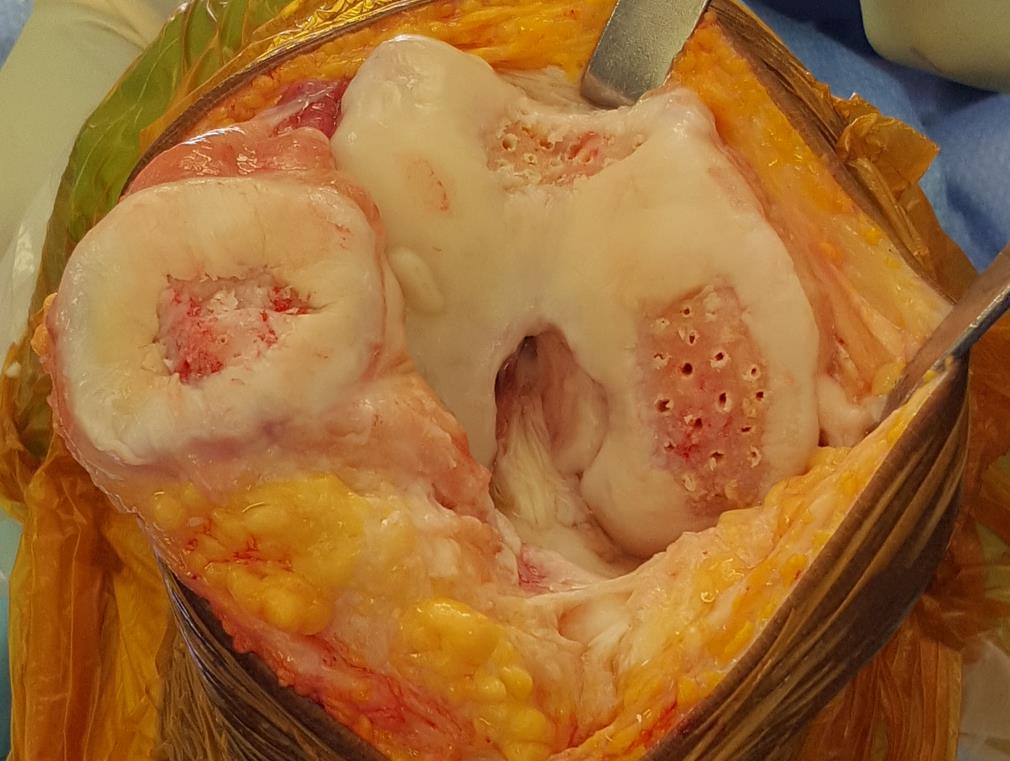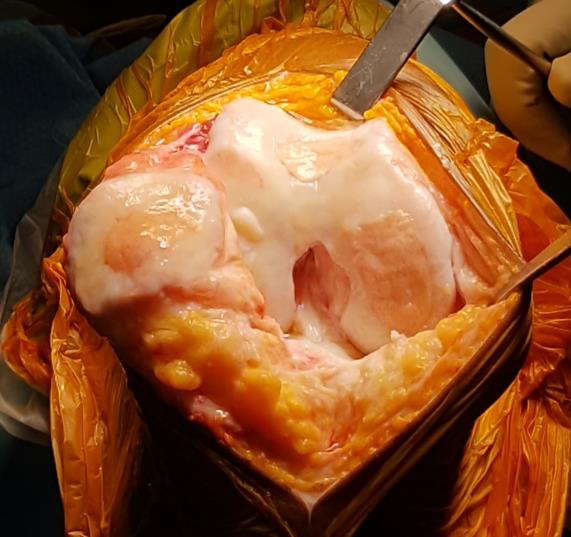Biological knee replacement
Tissue engineering techniques are improving now to the point where larger areas of joint damage can be treated. End-stage arthritis with severe pain is treated with knee replacement surgery where either part or whole of the joint is replaced with an artificial material. Joint replacement is a very successful operation in those with a relatively low level of function.
However, in individuals who are very active, knee replacements are less successful and preserving one’s joint is more preferable.
Materials, along with cellular technologies, now enable us to literally ‘grow’ a new joint instead of replacing it. Bone marrow cells (these are rich in stem cells) are placed on an artificial ‘scaffold’ which encourages the growth of new cartilage. This scaffold is implanted onto the damaged areas allowing patients to be pain free and function normally.
This is an example of a patient in their 20’s who had severe damage to all areas of the knee joint. He was in pain and could not run and work in his job as a football coach. Following surgery and rehabilitation, he resumed football coaching.
The image below shows the knee joint with large areas of cartilage loss. Microfracture has been performed (perforations in the bone).

Image below showing the defects filled with the scaffold and cells. This will allow cartilage in-growth over time to restore the joint.
